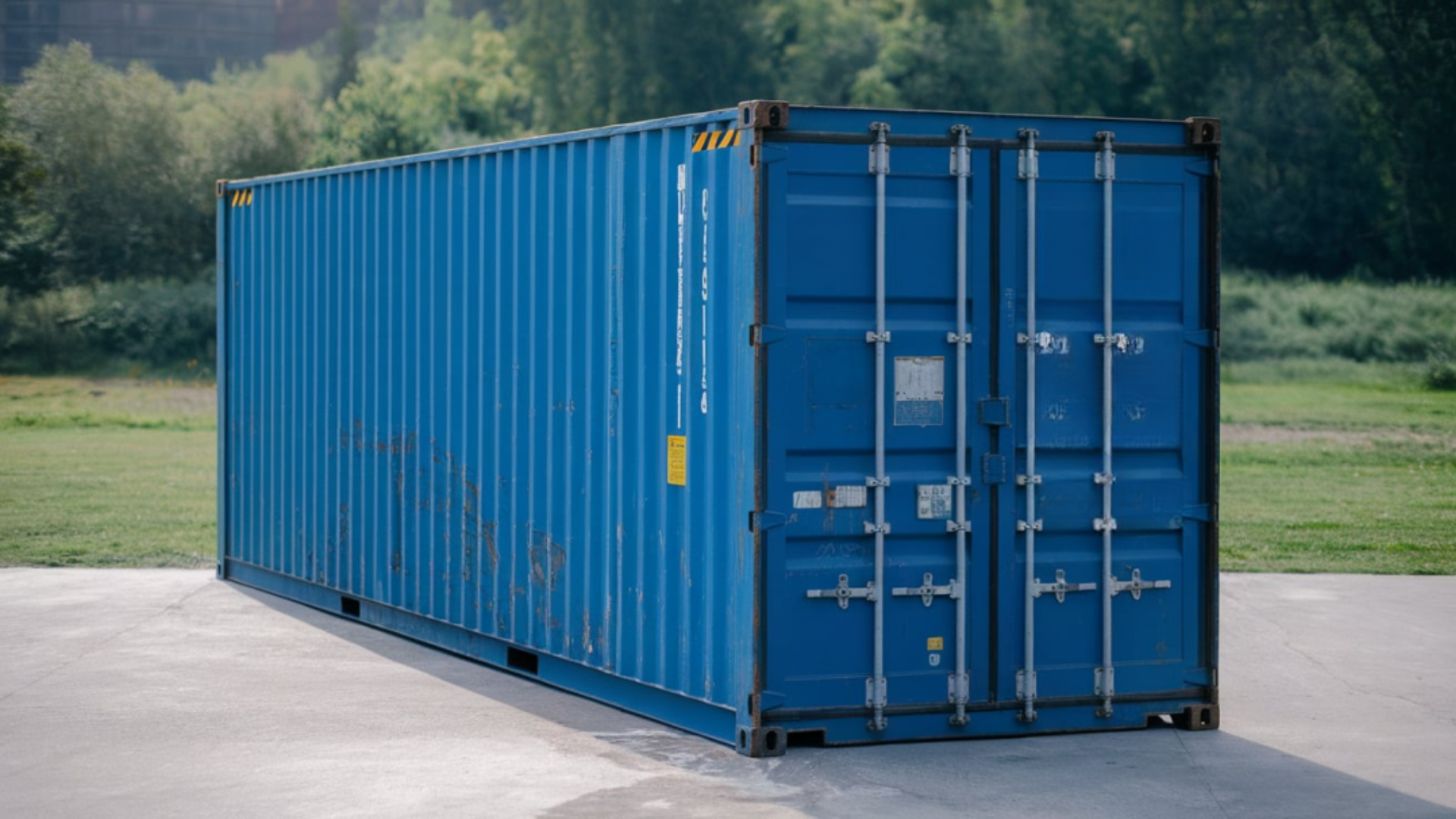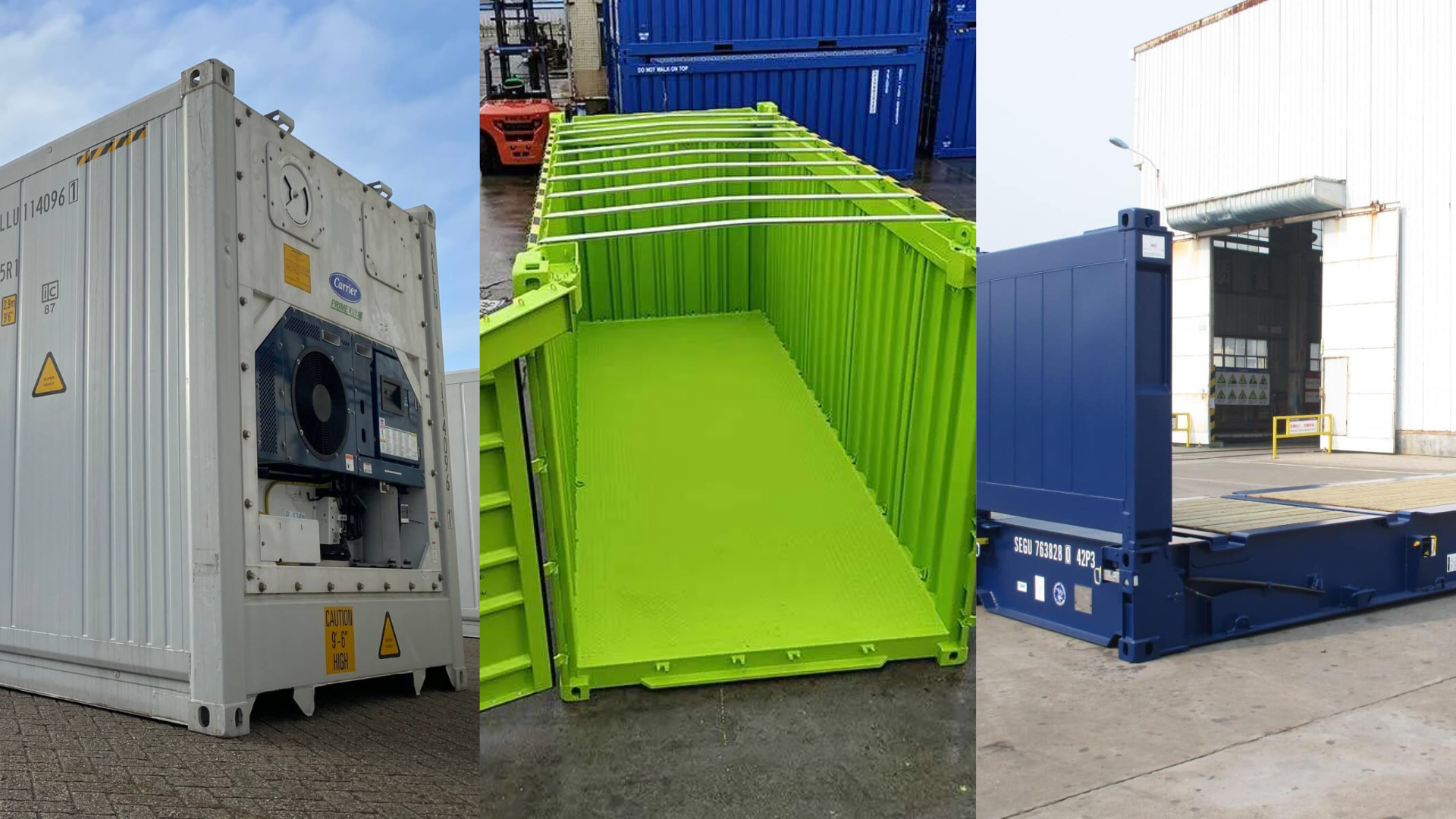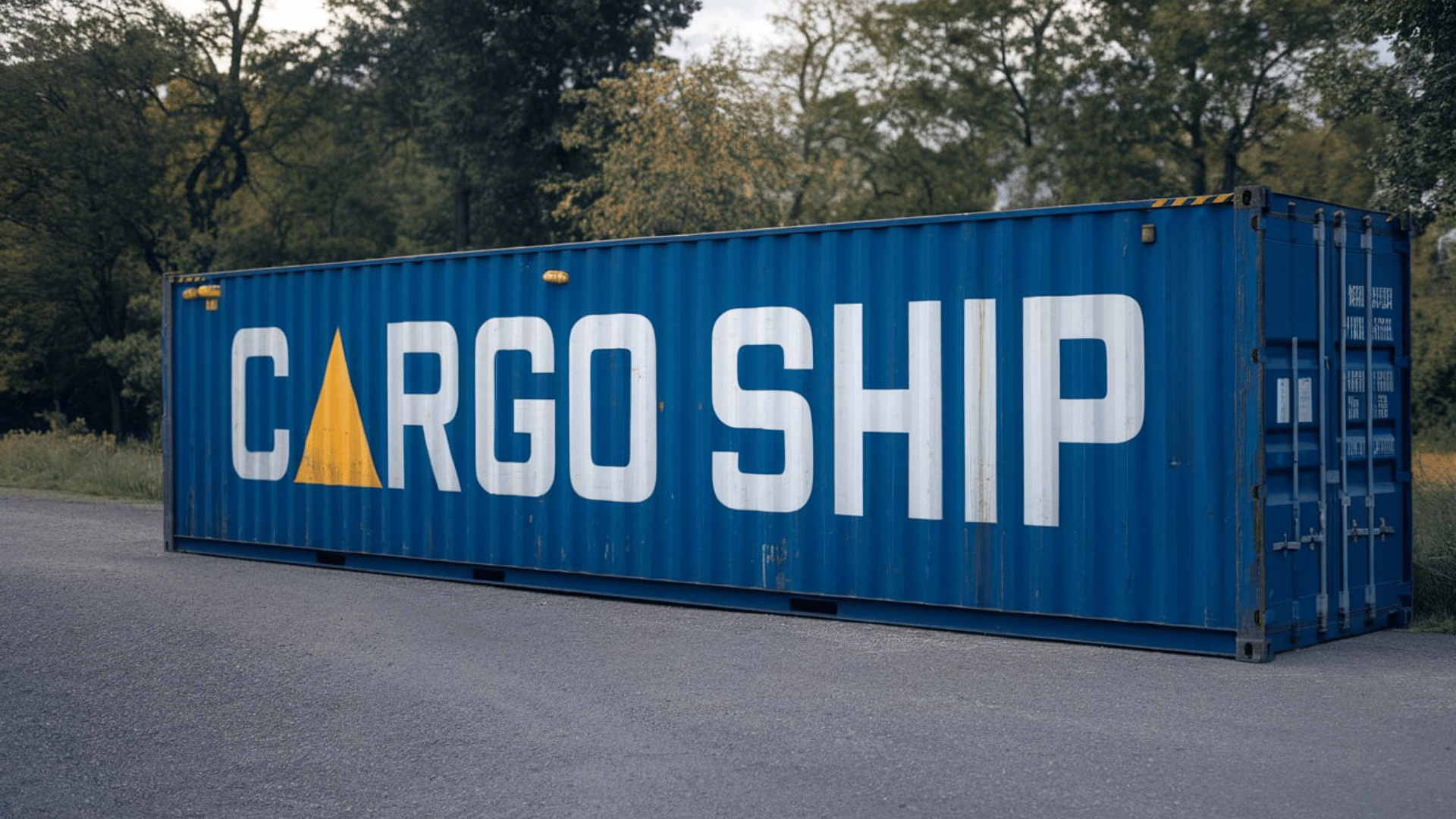When I started learning about shipping containers, I quickly realized how important it is to know the exact size and weight of a 40-foot container.
These containers are some of the most common options for moving cars, furniture, or goods from one place to another, and their dimensions can make a big difference in planning.
From the outside size to the inside space and door openings, every detail matters when figuring out what will fit. The weight limits are just as important, since overloading can lead to extra fees or safety issues.
In this guide, I’ll break down the key 40 ft container dimensions, shipping container dimensions 40ft, and explain what they mean for real-world shipping needs.
Understanding 40 Ft Container Dimensions

A 40-foot shipping container is one of the most widely used sizes in the world, and knowing its exact dimensions can save time and trouble when planning a move or shipment.
On the outside, the standard 40 ft container measures about 40 feet long, 8 feet wide, and 8.6 feet tall.
Inside, the space is slightly smaller because of the walls and flooring, with an internal length of around 39.5 feet, a width of 7.7 feet, and a height of about 7.8 feet.
The door opening is also a bit smaller than the interior height and width, which is important when loading large items.
Understanding these measurements helps you decide if your cargo will fit safely and efficiently.
Shipping Container Dimensions 40ft: Standard vs. High Cube
A 40-foot container comes in two main types: the standard and the high cube. Both share the same length and width, but the high cube offers extra height and space.
| Type | External Size (L × W × H) | Internal Size (L × W × H) | Door Opening (W × H) | Capacity (Cubic Meters) | Max Gross Weight | Tare Weight | Payload Capacity |
|---|---|---|---|---|---|---|---|
| Standard 40 ft | 40′ × 8′ × 8′6″ | ~39′5″ × 7′7″ × 7′9″ | ~7′8″ × 7′6″ | ~67 m³ | ~32,500 kg | ~3,700 kg | ~28,800 kg |
| High Cube 40 ft | 40′ × 8′ × 9′6″ | ~39′5″ × 7′7″ × 8′10″ | ~7′8″ × 8′5″ | ~76 m³ | ~32,500 kg | ~3,880 kg | ~28,620 kg |
This extra foot of height in a high cube makes it the better option for bulky or oversized cargo that won’t fit in a standard container.
40ft Shipping Containers: Door Opening vs. Cargo Fit
When planning to load a 40-foot container, the door opening is just as important as the overall internal size. Even if your cargo fits inside by measurement, it still has to pass through the doors.
- Door Size – A standard 40 ft container door is about 7′8″ wide (2.34 m) and 7′6″ high (2.28 m). For a high cube, the width is the same, but the height increases to about 8′5″ (2.58 m).
- Cargo Fit – Large machinery, tall furniture, or bulky pallets might fit inside but fail to clear the door. Always measure the largest side of your cargo against the door opening.
- Pallet Loading – Standard containers hold around 25–27 Euro pallets, while pallet-wide or high cube options can fit up to 30.
By checking both the door and internal space, you can avoid surprises and make sure your cargo loads smoothly.
Specialized 40-Foot Container Options

I often get asked about the different types of 40-foot containers beyond the standard or high cube, and the truth is, there are special designs made for unique shipping needs.
These options give flexibility for cargo that requires cooling or doesn’t fit into a regular box.
1. 40-Foot Reefer (Refrigerated) Container
Reefer containers are designed to transport temperature-sensitive goods like food, medicine, or chemicals.
- Internal Space – 11.5 m × 2.29 m × 2.56 m
- Door Opening – 2.29 m wide × 2.57 m high
- Max Gross Weight – 34,000 kg
- Tare Weight – 4,700–4,800 kg
- Payload Capacity – 29,000 kg
- Special Feature – Built-in refrigeration unit for chilled or frozen cargo
The usable volume is slightly less than a standard container because of the insulation and cooling equipment.
2. 40-Foot Open-Top Container
Open-top containers are ideal for oversized cargo that won’t fit through standard doors, such as tall machinery or heavy construction equipment.
Instead of a fixed steel roof, they have removable bows and a tarpaulin cover, allowing loading from above with a crane.
The internal length and width are similar to standard 40-foot containers, but height clearance depends on the cargo and how it is loaded.
Because of the open roof, they’re often used for items that need special handling or can’t be tilted to fit through container doors. This design makes them highly versatile for industrial shipments.
3. 40-Foot Flat-Rack Container
Flat-rack containers are built for out-of-gauge loads that can’t fit into enclosed containers, like vehicles, boats, or large machinery.
They have strong steel floors with no fixed sides or roof, and some versions come with collapsible end walls. This structure gives flexibility for extra-wide or extra-tall cargo that extends beyond normal container dimensions.
The weight capacity is usually very high, making them suitable for heavy loads.
Flat-racks are a go-to choice for specialized transport where standard or even open-top containers won’t work, offering maximum freedom for unusual cargo shapes and sizes.
Compliance & Identification: ISO, CSC Plate, Codes
Every 40-foot container follows strict global standards to make sure it can travel safely across ships, trucks, and trains. These details are marked on the container for quick reference.
- ISO Codes – Identify the size and type (e.g., 42G1 for a standard 40 ft).
- CSC Plate – Shows the container’s safety approval, max gross weight, and inspection validity.
- Container Number – A unique ID used for tracking worldwide.
- Manufacturer Data – Includes build year and technical details.
- Weight Ratings – Listed for safe loading and handling.
These markings help shippers confirm that the container is safe, traceable, and fit for international use.
Practical Checks Before You Book A 40-Foot Container
I always suggest checking a few key details before booking a container, because it can save time, money, and stress later.
- Measure Cargo vs Door Opening – Ensure the largest item fits through the door, not just inside.
- Check Weight Distribution – Stay under payload limits and balance heavy goods evenly.
- Review Route Restrictions – Confirm clearance for high cube containers on bridges and tunnels.
- Inspect Container Condition – Look for rust, dents, or leaks that could damage cargo.
- Verify Availability – Some ports may not stock special types like reefers or flat-racks.
Doing these checks first makes the shipping process smoother and prevents costly surprises.
Conclusion
A 40-foot container is one of the most versatile and widely used options for shipping goods around the world.
From standard and high cube designs to reefers, open-tops, and flat-racks, each type serves a specific purpose depending on what you need to move. Knowing the exact dimensions, door openings, and weight limits makes planning easier and helps avoid costly mistakes.
Whether you’re moving household goods, machinery, or temperature-sensitive items, understanding container specs ensures your cargo stays safe and compliant.
For more practical shipping guides and container insights that help you plan smarter, read my other blogs before booking your next move.















